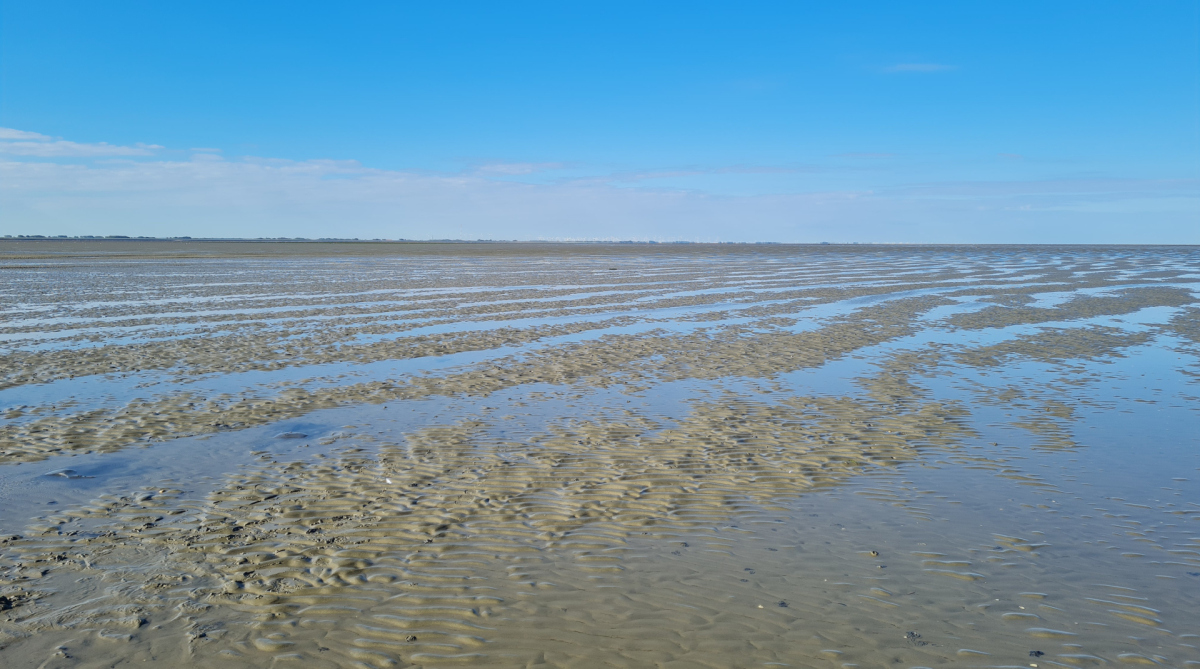- Press Office
- Press releases
- Reactive oxygen impacts carbon cycling in tidal sands
Reactive oxygen impacts carbon cycling in tidal sands
The Wadden Sea, stretching along 500 kilometers of the North Sea shore along the coasts of Denmark, Germany and the Netherlands, mostly consists of so-called intertidal permeable sediments – i.e. seafloor that is flushed by seawater in the change of tides. It is frequently visited by seabirds, marine mammals and recreationists. But this highly dynamic habitat is also home to a plethora of microbes. They process carbon and nutrients from the seawater and fluvial inflows, making the sand a crucial site for organic matter remineralization and transforming it into an enormous purifying filter.
A perfect spot for ROS production
The frequent fluctuation between oxic and anoxic conditions (at high tide and low tide, respectively) in the sediments makes them a perfect spot for the production of reactive oxygen species (ROS). ROS are molecules that contain oxygen and are chemically very active. Their environmental role is multifaceted: ROS can be dangerous to organisms and damage cell components, but they can also be beneficial for microbial growth. Because of their high activity, ROS are very important agents in the transformation and cycling of carbon and other substances in the environment and can thus have a great impact on the functioning of ecosystems. Nevertheless, they remain poorly studied in many habitats – amongst them the sandy flats of the Wadden Sea.
A group of scientists from the Max Planck Institute for Marine Microbiology in Bremen now took a closer look at ROS in a sandflat called Janssand in the German Wadden Sea off the island of Spiekeroog. Olivia Bourceau, Marit van Erk and their colleagues from the Microsensor Group investigated the ROS hydrogen peroxide. “We wanted to know if there is any detectable hydrogen peroxide in the intertidal sands”, says Bourceau. “And if so, we wanted to know how this hydrogen peroxide impacts the mineralization processes, the recycling of organic matter, in these sands.”
Hydrogen peroxide impacts microbial activity
Indeed, the team around Bourceau and van Erk detected high concentrations of hydrogen peroxide in the intertidal sands. “We found that there is a fine balance between the production and degradation of hydrogen peroxide”, says co-author van Erk. When the scientists changed the input of oxygen or removed hydrogen peroxide in experiments, that massively impacted the sand-dwelling microbes. ROS inhibited the microorganisms in the sand, thus its removal boosted microbial activity. “The amount of ROS naturally present in the sands reduced the rates of the main mineralization processes, both aerobic respiration and sulfate reduction, substantially.”
Important for carbon and nutrient cycling
Elevated ROS levels can be expected particularly during disturbance events and at oxic–anoxic interfaces – both frequently occurring in intertidal permeable sediments. The high rates of carbon and nitrogen remineralization make these sediments into huge biocatalytic filters. Any changes in ROS concentrations thus have the potential to directly impact the effectiveness of sands as such filters and the functioning of shallow water ecosystems.
Consequently, ROS may play an important and yet unappreciated role in the biogeochemistry of dynamic coastal sediments. “From our findings, we can conclude that ROS have the potential to substantially impact carbon cycling in the sediments. Understanding the controls on carbon cycling is very important for studying eutrophication and the impact of human activity on coastal systems“, Bourceau concludes.
Original publication
van Erk, M.R., Bourceau, O.M., Moncada, C. et al. Reactive oxygen species affect the potential for mineralization processes in permeable intertidal flats. Nat Commun 14, 938 (2023).
Participating institutions
- Max Planck Institute for Marine Microbiology, Bremen, Germany
- Woods Hole Oceanographic Institution, Woods Hole, MA, USA
Please direct your queries to:
Head of Press & Communications
MPI for Marine Microbiology
Celsiusstr. 1
D-28359 Bremen
Germany
|
Room: |
1345 |
|
Phone: |

